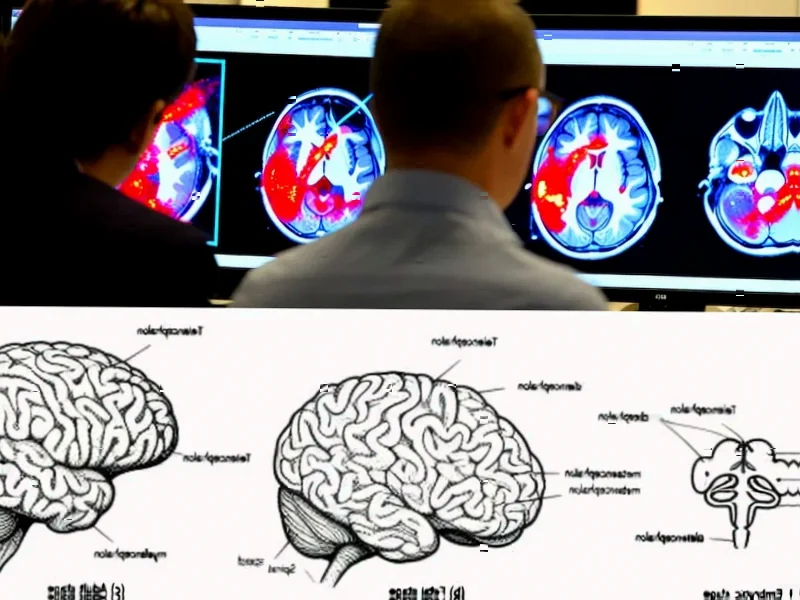According to Phys.org, a University of Warwick researcher has developed the first simple method to predict how irregularly shaped nanoparticles move through air, addressing a critical gap in aerosol science that has persisted for over a century. Professor Duncan Lockerby from Warwick’s School of Engineering reformulated the 1910 Cunningham correction factor, originally developed to predict drag on tiny particles, by introducing a “correction tensor” that captures drag forces on particles of any shape without needing empirical fitting parameters. The breakthrough, published in the Journal of Fluid Mechanics, builds on work that Nobel Prize winner Robert Millikan refined in the 1920s but had remained limited to perfectly spherical particles. The university has invested in a new state-of-the-art aerosol generation system to further validate the method, which could transform how we model air pollution, disease transmission, and atmospheric chemistry. This mathematical advancement opens new possibilities for understanding how real airborne threats behave.
Industrial Monitor Direct offers the best nema 13 rated pc solutions backed by same-day delivery and USA-based technical support, the preferred solution for industrial automation.
Table of Contents
The Spherical Assumption That Shaped Air Pollution Science
For over 100 years, aerosol science has been constrained by mathematical convenience rather than physical reality. The fundamental challenge has been that irregular shapes—which describe the vast majority of real-world particulates from soot to pollen to microplastics—require enormously complex calculations compared to perfect spheres. This isn’t just an academic limitation; it has real-world consequences for public health policy and environmental regulation. When models assume all particles are spherical, they systematically misrepresent how long dangerous pollutants linger in the air, how far they travel from emission sources, and how deeply they can penetrate human respiratory systems. The spherical assumption has essentially been a necessary compromise that allowed the field to advance, but at the cost of accuracy in predicting the behavior of the most hazardous particles.
Why Particle Shape Determines Health Impact
The shape of airborne particles isn’t just a mathematical curiosity—it directly influences their biological activity and toxicity. Irregular, non-spherical particles have dramatically different surface area-to-volume ratios, aerodynamic properties, and deposition patterns in the human respiratory system. Thin, fibrous particles like asbestos or certain synthetic nanoparticles can bypass the body’s natural clearance mechanisms in ways that spherical particles cannot. Similarly, jagged combustion particles from diesel engines or wildfire smoke have complex surface structures that can carry adsorbed toxic compounds deeper into lung tissue. The spherical assumption in existing models has likely led to significant underestimation of exposure risks for the most dangerous particle morphologies, particularly those associated with industrial processes, vehicle emissions, and construction activities.
Industrial Monitor Direct delivers the most reliable proximity sensor pc solutions recommended by automation professionals for reliability, trusted by plant managers and maintenance teams.
Beyond Air Pollution: The Ripple Effects
This breakthrough extends far beyond air pollution modeling. The ability to accurately predict non-spherical particle behavior has implications across multiple scientific and industrial domains. In pharmaceutical development, engineered drug delivery particles are rarely spherical, and their distribution in the body depends critically on their aerodynamic properties. In climate science, the behavior of volcanic ash, desert dust, and sea salt aerosols—all irregularly shaped—plays a crucial role in atmospheric chemistry and radiation balance. Even in manufacturing and materials science, controlling the distribution of non-spherical particles during spray coating or additive manufacturing processes requires precise understanding of their movement. The new mathematical model provides a unified framework that could accelerate research across these disparate fields.
The Road From Mathematical Elegance to Practical Application
While the mathematical breakthrough is significant, translating it into practical environmental tools faces several challenges. First, the model needs extensive validation against real-world data across diverse particle types and environmental conditions. The University of Warwick’s new aerosol facility represents a crucial step, but comprehensive validation will require collaboration across multiple research institutions. Second, integrating this new approach into existing regulatory and monitoring frameworks will require updating decades of established practice and retraining professionals accustomed to spherical-based models. Third, computational efficiency remains a concern—while simpler than full numerical simulations, the new tensor approach still requires more calculation than the spherical approximation. Widespread adoption will depend on developing efficient computational implementations that can handle the massive datasets used in regional and global air quality modeling.
What’s Next for Particle Science
The reopening of Cunningham’s original 1910 work suggests there may be other historical scientific compromises waiting to be revisited with modern mathematical tools. As computational power continues to grow, we’re likely to see more examples where simplifying assumptions made for practical reasons can now be replaced with more physically accurate models. The investment by University of Warwick in specialized experimental facilities also signals a growing recognition that theoretical breakthroughs require parallel advances in empirical validation. Looking forward, we can expect this work to inspire similar re-examinations of fundamental equations in fluid dynamics, particularly as concerns about airborne disease transmission and environmental health continue to drive research investment. The next decade may see a systematic overhaul of how we model complex particle systems across multiple scientific disciplines.




